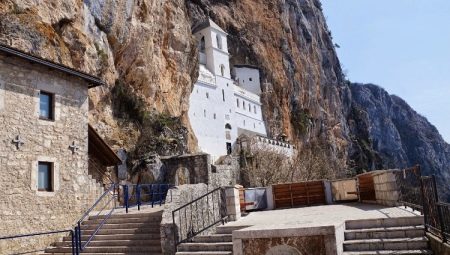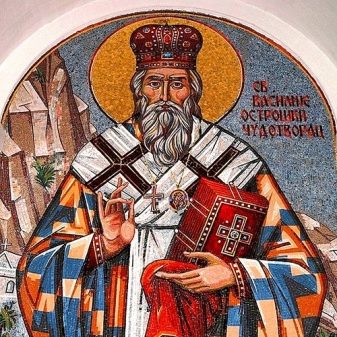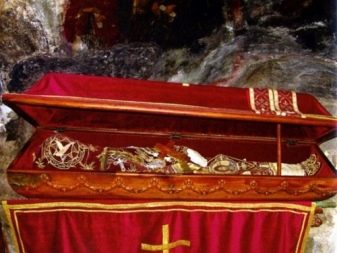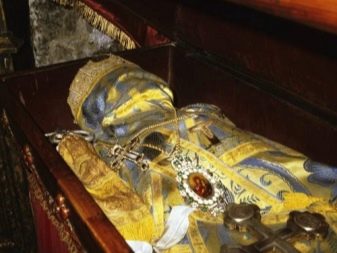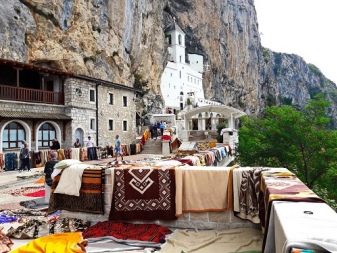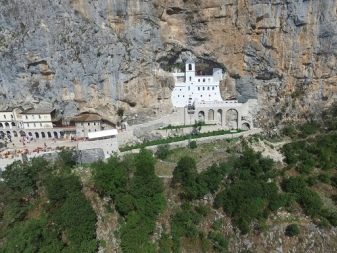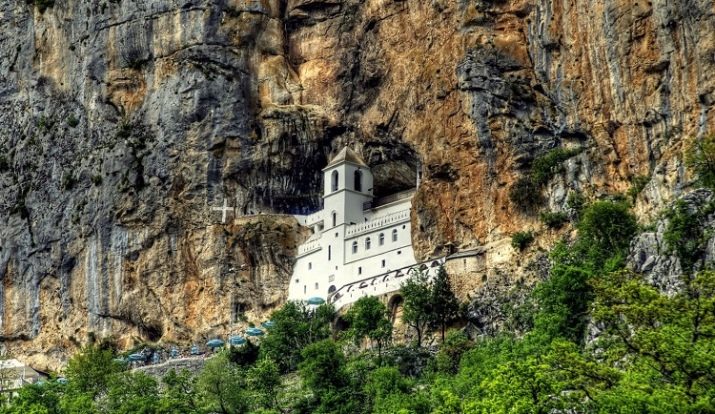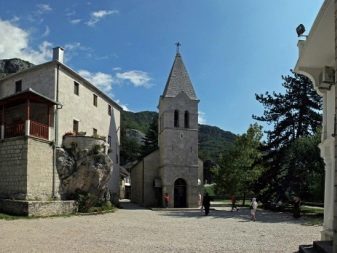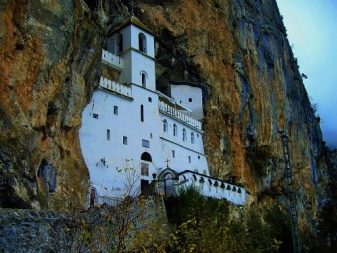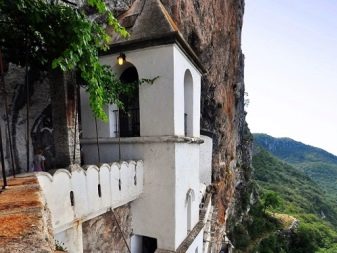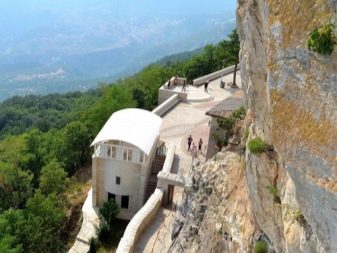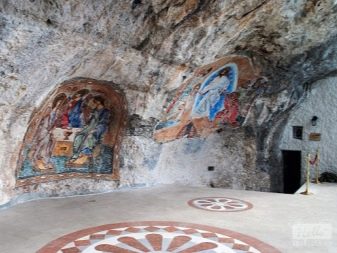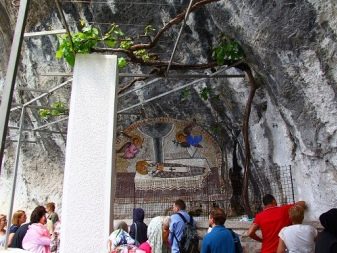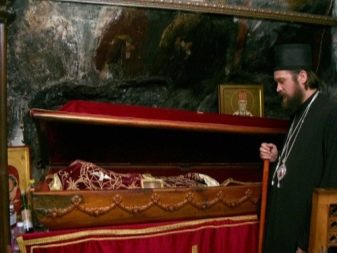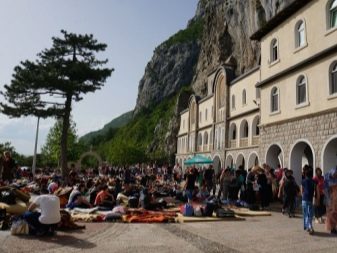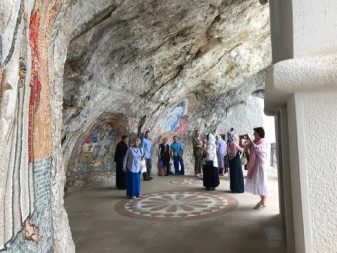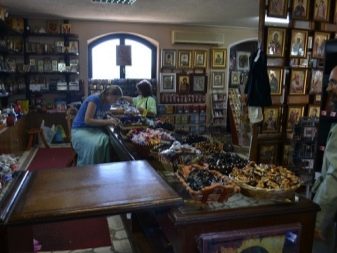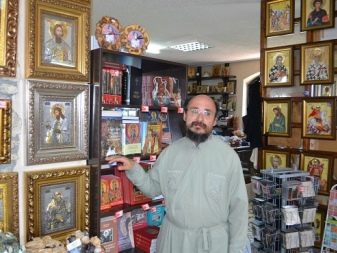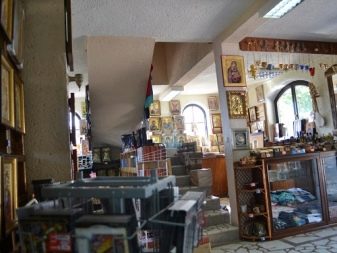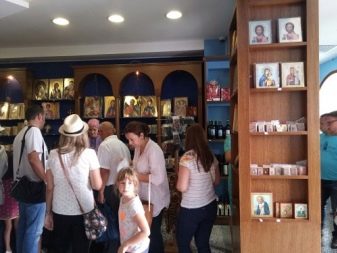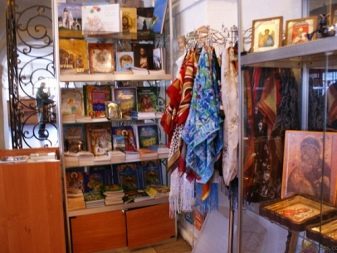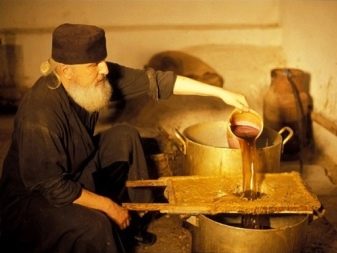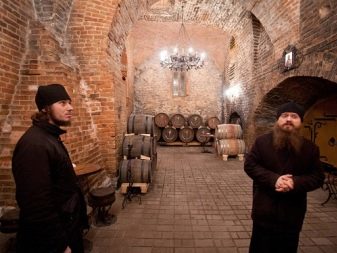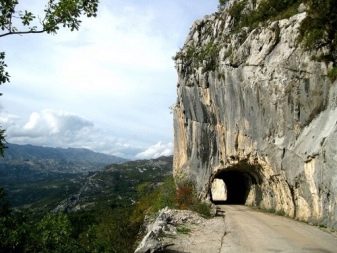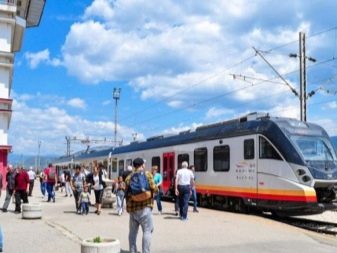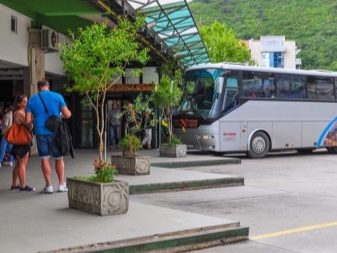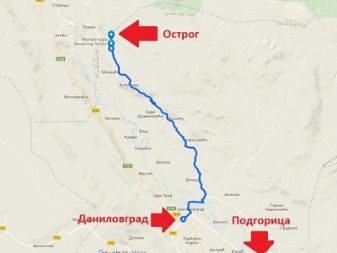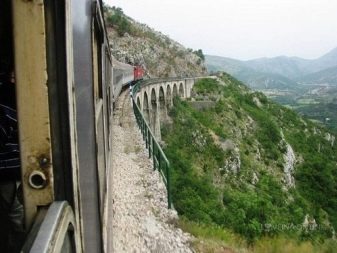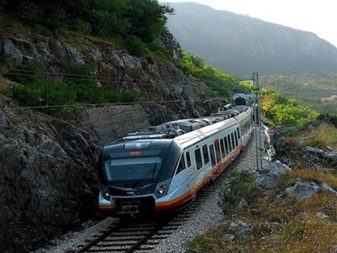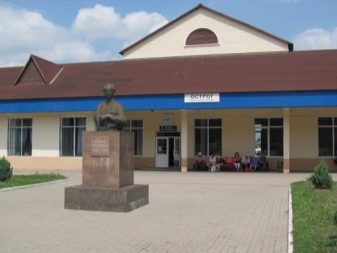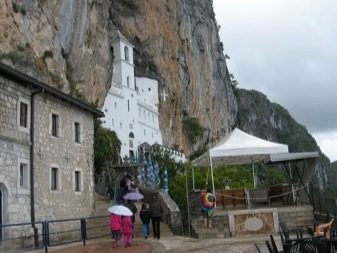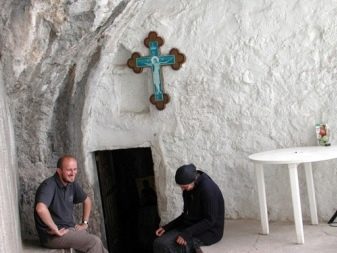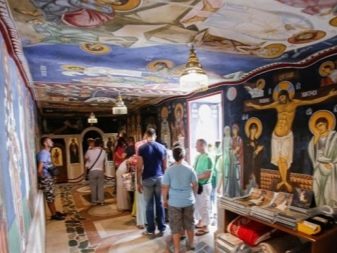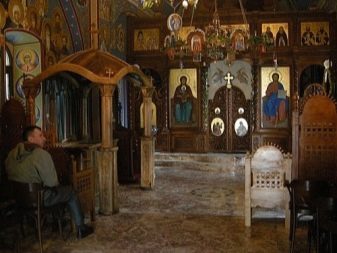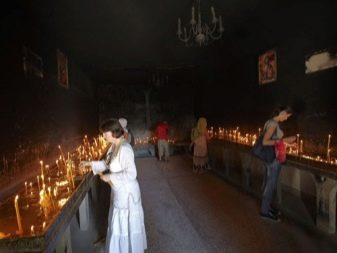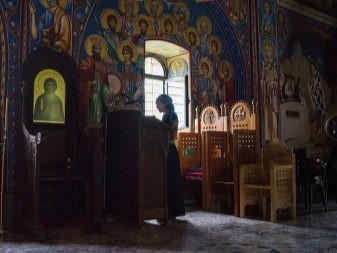Hundreds of thousands of pilgrims annually go to holy places to honor them with their visit, as well as to ask health, happiness, vitality from heavenly intercessors. There are places that the whole world knows about, for example, Jerusalem. There are those who have heard far from all or have approximate information. For example, many probably know the name of Vasily Ostrogsky by ear, but they know almost nothing about the monastery associated with it. But this is one of the main attractions of Montenegro.
A bit of history
Ostrog is the name of the current Orthodox Serbian monastery. It is remarkable in many ways. The first is its location. The monastery was built right in the rock at an altitude of 900 m above sea level. And this really special location of the monastery attracts more and more pilgrims to its walls. But not only the geography of the place makes the structure unique.
Ostrog Monastery in Montenegro is a story that is well known, captured in various kinds of sources, which has survived to our times in a recognizable form. The founding date of the monastery can be considered the XVII century. For this we must thank Vasily Ostrogsky, Metropolitan-Bishop of Herzegovina. He was canonized after his death, and today it is one of the most revered saints in Serbia and Montenegro.
The real name of Vasily Ostrozhsky is Stoyan Jovanovic. Since childhood, parents, wishing the son of a better life, sent him to his uncle in a monastery. In Trebinje he took the veil, choosing for himself the life of an ascetic forever. Becoming a bishop was a difficult decision for this man; he did not do so with great desire. But fortunately, Vasily agreed and subsequently built the most outstanding monastery in the mountains. He built it all his life, only death stopped the construction, which made a lot of sense for the bishop.
Interesting fact! Seven years after the death of Vasily Ostrozhsky, the abbot of St. Luke’s monastery has a dream where the deceased bishop asked to open his grave in Ostrog. The dream was repeated again and again, which was perceived as a heavenly sign, and together with the monks the abbot really headed for Ostrog. Fasting and prayer at the grave lasted seven days, only after that the last refuge of Vasily Ostrogsky was opened. His body is well preserved, it smelled of basil. The relics were transferred to the Upper Monastery, to this day they rest in the Church of the Presentation.
Alas, there was no complete peace for the monastery for all the centuries of its existence. I had to protect the shrine on the rock, mainly from the Turks. And during the Second World War, a German bomb fell on the monastery’s Holy Trinity Church. Is it not a miracle that the bomb broke, but it never exploded ?! The fragments of the projectile are still kept in the monastery.
If you go back to Vasily Ostrozhsky, whose name is sacred for the Orthodox, there is a legend that a gorgeous vine grew at the place of his death. To this day, many women who dream of having a baby, believe that it is the grapes from the place where the saint calms them that will help them in this.
What to see?
The territory of the Ostrog monastery is interesting in itself - there are several objects that will be opened to the visitor gradually.
Therefore, when going on an excursion to this temple, keep in mind that it will take a lot of time (if you really want to see everything).
Lower Monastery
For example, the Lower Monastery was built relatively recently, in the XIX century.It has several cells, the Church of the Holy Trinity, as well as a guest house, which serves as a shelter for pilgrims for the night. One bed costs about 5 euros. Wake the visitor early, around 5 in the morning.
In this very church, the relics of the boy Stanko are buried - this is a 12-year-old boy; in the difficult years of Turkish persecution, his hands were cut off for not letting the Orthodox cross out of them. The boy after martyrdom canonized saints.
Upper Monastery
It is located three kilometers from the Lower. We must immediately prepare for the fact that the road to this part of the shrine is dangerous, difficult for any traveler, in a certain sense, risky. Although believers use it rarely - there is a short path, forest.
On the territory of the Upper Monastery there are two churches - Vvedenskaya and Krestovozdvizhenskaya. Many and many pilgrims rush to Vvedensky, which can be understood: here Vasily Ostrogsky himself spent 15 years in tireless prayers. It is surprising that the size of the shrine is more than modest - 3 to 3 m. At the entrance you can see on the cliff a carved icon of the bishop.
As for relics, there is a silver candlestick here, as well as a prayer book, which date back to the 18th century.
Two churches in the caves managed to survive, as there were no wooden structures. Now in the monastery - these are the most important and revered places. Monastic cells also rebuilt.
Vvedenskaya Church is the place where the relics of Vasily Ostrogsky rest.
There are a lot of pilgrims - both locals and tourists from afar, on weekends it would be difficult to get to the relics, therefore the monks control the flow.
Holy Cross Church has such a name, since it is believed that the part of the cross on which they crucified Jesus was presented to the abbots of the temple during its construction. The temple is located in a cave on the upper monastery floor. Murals painted her Serbian artist Radul. And although it is damp inside the temple, the frescoes are well preserved. Their uniqueness is that he worked on the frescoes of Radul right on the walls of the rock. And they depict Saint Basil, Saint Sava, as well as episodes from the life of Jesus, religious festivals.
During the tour, tourists will be interested to see:
- the shrine with the relics of St. Basil of Ostrog;
- healing spring, the water from which is free for each visitor;
- chains that are considered evidence of the healing of a person suffering from rabies (stored in the Holy Cross Church);
- fragments of the projectile that fell into the temple during the Second World War;
- the holy relics of a 12-year-old Stanko.
On the days of religious holidays pilgrims at the walls of the monastery becomes especially large. In the summer, most of them try to climb to the Upper Monastery on foot, although local minibuses offer the pick-up service. If a believer is convinced, very religious, and he came to these places to ask for something from St. Basil, he may pass the way to him barefoot or even on his knees.
On the day of the death of Vasily Ostrog, May 12, pilgrims try to spend the night at the monastery walls. By the way, the simplest bedding can be taken on the spot. Overnight is needed in order to catch the morning prayer. And although there is a pilgrim room, which with a stretch can be called a mini-hotel, especially religious people prefer to spend the night under the open sky.
Souvenir shop of Ostrog
It would seem, what can be remarkable in the souvenir shop, which operates at each monastery? But the assortment of what can be purchased at the Ostrog monastery shop really deserves attention. Candles, amulets and icons are a standard set for such places, but you can still become the owner of brogues, silver and gold pendants with the image of a shrine, amulets.
You can buy here and honey, and olive oil, and wine. In memory of the journey you can take away the healing aromatic oils (really high-quality), natural cosmetics.By the way, the latter, no matter how rough it may sound, could be just a marketing ploy, but its quality is really high in the opinion of those who bought and used it.
A little more about broanits. So called special beads that are worn on the arm. In the place of interlacing of such beads - the cross, it can be plastic or metal. In the brojanitsa there are 33 knots, and each knot consists of 7 crosses-weaves. This is a very strong and durable decoration that will cost the tourist a couple of euros. They are sold in several colors: black says about asceticism, white - about purity and innocence, blue will protect the wearer from overstrain, and red - from envious glances. Weave brooches from sheep wool.
You can buy it not only for yourself - often these decorations are taken in order to then present them as a gift to loved ones. They are usually worn on the left hand. There is an opinion that wearing a bogun is tantamount to wearing an Orthodox cross.
Also in the souvenir shop you can buy brandy. So called strong drink, in essence, is a brandy. Plum tree is considered the strongest raki, and there is rakia from apricot, quince, apples, grapes. They make rakiya and on the basis of honey and herbs. You can buy the drink in very beautiful bottles, so for the present from the holy places of Montenegro, the drink is more than suitable.
It is unlikely that you leave the souvenir shop without buying local honey - mountain, forest, meadow, floral, lime ... The choice is very large and pleasant. Local seeds are added to honey, pumpkin and sunflower seeds, the delicacy is very tasty. And if you buy honey with figs and nuts, then you will hardly find something like that somewhere else.
The monks are made from the fruits of local olive trees and olive oil. Also here you can buy wine: Vranac (red) and Krstac (white). And next to him in a good assortment of medicinal syrups. Cosmetics are made on goat milk, beeswax and mountain herbs. Water for cosmetics taken straight from the healing source.
In a word, it is worth taking more money for such an excursion, because the monastery shop pleasantly amazes with its assortment.
How to get there?
In Budva, a tourist can rent a car, which greatly facilitates the further logistics of routes. There are several highways leading to the monastery, each of which can be reached: one goes through Danilovgrad, the other from Bogetici, the third from Niksic. The road through Danilovgrad is considered by many to be the safest for tourists who are not tempted by serpentines.
The second way is to use public transport services. There is no direct communication from Budva to Ostrog, no matter how strange it is. Therefore, the path will consist of several stages:
- from Budva to Podgorica by bus (one and a half hours);
- from Podgorica to Ostrog by train (40 minutes);
- from the railway station to the monastery on foot or by taxi: on foot it will be about an hour and free of charge, by taxi - 15 minutes and about 20 euros.
If you get yourself, outside the excursion group, be sure to secure travel expenses (transport will have to be changed) for unforeseen expenses. Look ahead to the future route on the map.
But do not worry: the quality of transport here is very good, even a simple train will seem to you very comfortable, where everything is thought out for the convenience of the passenger.
Many tourists consider the most interesting part of the route to be from the Dabovichi railway station directly to the monastery. The length of this path is about 4 km, all the way is an asphalt road, following which vineyards and farms will open to your eyes. There is also the possibility of hitchhiking. But this path is simply created for a walk - amazing views, alternating landscapes.
Be sure to recharge the phone on the eve of the trip or take a camera with you.
And there is still a way from the Ostrog railway station, which, although shorter, is harder to overcome. The quality of the trail is so heavy in some places that without trekking shoes you will have a hard time.Hitchhiking excluded, infrastructure along the way - in the red.
Rules of attendance
Remember that defiling the feelings of believers is not just words and a cause for contention. Therefore, try to follow all the rules of visiting the Ostrog Monastery. These are, above all, clear requirements for vestments. Shoulders and knees, no matter how hot it is, should be covered in both women and men. You can use T-shirts and shorts on the road, but on the territory of the monastery this outfit will have to be changed to shirts and pants for men, as well as skirts and scarves for women’s shoulders.
But to cover the head of women in this place is not necessary, no one will condemn for an uncovered head (although most Orthodox tourists and pilgrims still use a scarf).
It is forbidden to smoke on the territory of the shrine, bring pets with you. Shoot and take pictures inside the temples can not.
Also prepare for the fact that some points may be unusual for you. For example, candles here are not placed under the icons in the temple - they are placed outside the church, in special boxes filled with sand and water. Also built on trust is how many candles you took, whether you paid for their value - no one checks this.
If you decide to stay in a house for pilgrims, you will be accommodated in a room where 10 guests can be at a time. There are beds, a common area for washing, a kitchen-dining room (there is an opportunity to make coffee, to warm up food).
For many years people from different countries go to Vasily Ostrogsky for help, often in the hope of a miracle. And it was during the life of the priest: he gave shelter to the homeless, fed the hungry, helped, finally, with advice. Many people, according to the responses, received physical and / or mental healing after visiting the shrine. There is evidence of healing for mentally ill people. If you are called to these places by deep faith, then you need to visit every corner of the monastery, and the top of the pilgrimage will be a touch on the miraculous relics of Vasily Ostrog. But the usual tourist will surely remember this unique place.
Overview of the monastery of Ostrog in Montenegro in the video below.
